#Siliqua
Explore tagged Tumblr posts
Text

2 notes
·
View notes
Text
Saint John’s Bread

Saint John’s Bread, also known as Carob Tree (Ceratonia siliqua) sprouting at its trunk in the conservatory. Photo credit: Jonathan Chua.
It’s said that this is a sign that the tree is probably experiencing great stress and is trying to recover.
#photographers on tumblr#carob tree#Ceratonia siliqua#flora fauna#flora photography#nikon photography#nikon zfc#st john's bread#tamron 16-300mm#tree pics
9 notes
·
View notes
Text
travis mcelroy crossing the rubicon voice: the pod is cast
5 notes
·
View notes
Text

Algarrobas
Imagen de rawpixel
0 notes
Text
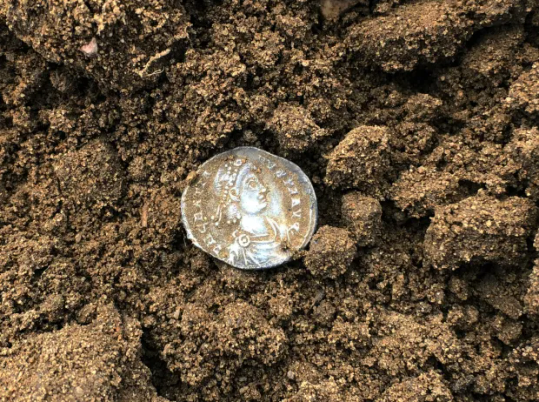
Roman Coin Hoard Found in England Sells at Auction
A hoard of Roman coins discovered by a metal detectorist scouring farmland has fetched more than £15,000 after going under the hammer.
More than 430 coins were found buried in the village of Colkirk, near Fakenham, Norfolk.
A collection of 73 pieces, including an extremely rare coin featuring a phoenix on a globe, was auctioned in London.
The anonymous finder had shown "perseverance", said coin specialist Nigel Mills, from Noonans auctioneers.
"Some of the people I've spoken to recently, who have found some amazing finds, are spending a lot of time detecting - hours and hours - and they don't give up," he said.

"They keep going and that's the secret in so many things - don't give up, keep looking."
The Colkirk hoard, believed to date back to the early 5th Century, was spread out across a third of an acre on arable farmland, although the majority of finds were discovered in a 1.5m (59in) radius.
It was a lucky find for the detectorist, who had no idea the soil held such treasures.
They were out searching a field in January 2020 when they spotted a silver coin, which they recognised as a siliqua - a small, thin Roman coin.
It sparked a haul of 40 coins that day, with a further 40 found on the following one.
Covid lockdowns meant searches became more sporadic, but each discovery was logged with a portable GPS unit to accurately pinpoint the hoard's distribution.
In all, 315 coins were found in 2020, 114 in 2021 and three in 2022.
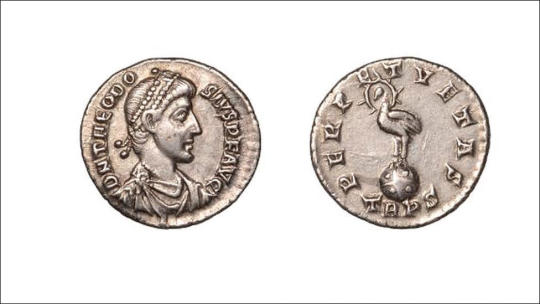
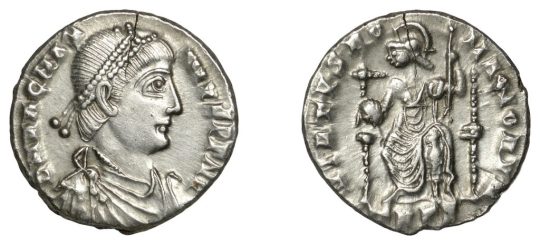
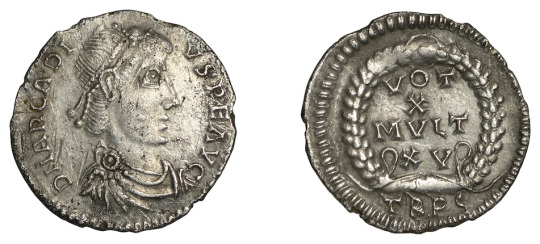
Some of the coins had been damaged, while others were fragmented due to farming processes.
A commemorative Third Miliarensis coin issued by Emperor Theodosius, decorated with a phoenix on one side, was only the fifth one of its type known to exist, with all the others in museums.
It reached £3,400 at the sale in Mayfair.
Mr Mills said: "The hoard had [been] spread out over a third of an acre through disturbance by ploughing and has been recorded under the Treasure Act.
"The hoard is likely to have been deposited at the beginning of the 5th Century AD, with the latest coin of Honorius dating no later than 402 AD.
"Other Roman treasure finds of gold and silver also from East Anglia, such as the Hoxne and Thetford hoards, reflect the wealth and importance of the area."
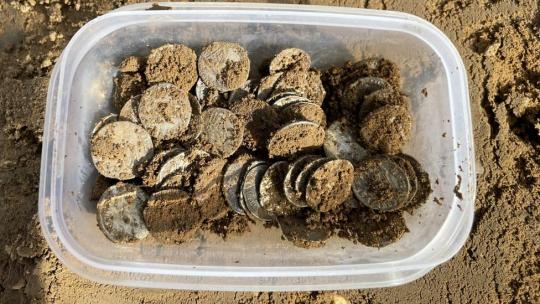
#Roman Coin Hoard Found in England Sells at Auction#village of Colkirk#metal detecting#coins#collectable coins#roman coins#ancient coins#ancient artifacts#archeology#archeolgst#history#history news#ancient history#ancient culture#ancient civilizations#roman history#roman empire#roman art
201 notes
·
View notes
Text
Interesting Coins of Constantine

Aureus of Augustus, Laurate head of Augustus left on the obverse, Bull on reverse.
The Heifer aureus is an extreme rarity and probably the most artistically beautiful coin ever issued by Augustus.

Aaaand Constantine steals takes inspiration for an obverse design for one of his weird experimental pieces.
We know that Constantine stole referenced the design because the obverse layout is rare enough that its more likely than not that Constantine had one of the Heifer aurei laying around and had the mint workers use it as a model.
The most interesting part of the coin is how the fourth century art style looks on the coin. It's just strange to see the style of the Christian empire on that of a first century coin.

Constantine didnt just have old Roman coins laying around to take inspiration from, he also had some old hellenistic tets too.
The coin above is a 5 Siliquae piece commemorating a dedication event for the city of Constantinople, the personification of which can be seen on the reverse seated. These coins would have been given out to the city elites of the time.

A Hellenistic tetradrachm for reference, the style of coin that Constantine took inspiration from.
23 notes
·
View notes
Text
Árboles mediterráneos o de regiones próximas
- Abies alba ( Centro y Sur de de Europa )
- Abies cephalonica ( Sur de Grecia )
- Abies nordmanniana ( Grecia, Cáucaso, Asia Menor )
- Abies pinsapo ( Sierras de Cádiz y Málaga )
- Acer campestre ( Europa, Asia Occidental, Norte de África )
- Acer monspessulanum ( Sur de Europa, Norte de África )
- Aesculus hippocastanum ( Norte de Grecia y Albania )
- Alnus cordata ( Sur de Italia, Córcega e Ischia )
- Alnus glutinosa ( Gran parte de Europa, Asia y Noroeste África )
- Alnus incana ( Europa, llegando hasta el Cáucaso )
- Betula pendula ( Casi toda Europa, Este Asia y Norte de África )
- Carpinus betulus ( Europa y Sureste Asia )
- Castanea sativa ( Parece que su área puede ser en Balcanes, Asia Menor y Cáucaso )
- Cedrus atlantica ( Montañas Norte de África: Marruecos y Argelia )
- Cedrus brevifolia ( Montañas de Chipre )
- Cedrus libani ( Líbano, Siria yTurquía )
- Celtis australis ( Paises del ámbito mediterráneo )
- Ceratonia siliqua ( Difícil origen, parece que en Arabia y Siria )
- Cercis siliquastrum ( Mediterráneo Oriental )
- Crataegus laevigata ( Europa, Norte de África, Oeste de Asia )
- Crataegus monogyna ( Europa, Asia y Norte de África )
- Cupressus sempervirens ( Se supone nativo del Mediterráneo Oriental: Irán, Chipre, Siria )
- Eleagnus angustifolia ( Oeste de Asia y naturalizado en el Sur Europa )
- Fagus sylvatica ( Área extensa del Centro y Oeste de Europa desde Penín. Ibérica a Polonia )
- Ficus carica ( Este del Mediterráneo, hasta el Oeste de Asia )
- Fraxinus angustifolia ( Mediterráneo Occidental y Norte de África )
- Fraxinus excelsior ( Toda Europa y llega a Asia Menor )
- Fraxinus ornus ( Sur de Europa y Asia Menor )
- Juglans regia ( Al parecer procede del Sureste Europa y Oeste Asia )
- Laburnum anagyroides ( Centro y Sur de Europa )
- Olea europaea ( Mediterráneo Oriental y Asia Menor, probablemente )
- Ostrya carpinifolia ( Sureste Europa, hasta el Cáucaso y Asia Menor )
- Phoenix canariensis ( Islas Canarias )
- Phoenix dactylifera ( Norte de África y Oeste Asia )
- Phoenix theophrasti ( Creta y en algunas zonas de Turquía )
- Pinus halepensis ( Región Mediterránea )
- Pinus nigra ( Área muy extensa Europa llegando Turquía )
- Pinus pinaster ( Paises del Mediterráneo Occidental y costas atlánticas Francia y Portugal )
- Pinus pinea ( Región Mediterránea )
- Pinus sylvestris ( Área muy extensa por Europa y Asia )
- Platanus orientalis ( Sureste Europa y próximo Oriente )
- Populus alba ( Europa, Oeste de Asia y Norte de África )
- Populus nigra ( Casi toda Europa y Suroeste de Asia )
- Populus tremula ( Amplia Europa, Norte de África, Norte de Asia )
- Prunus avium ( Casi toda Europa, Asia Menor y Norte de África )
- Prunus domestica ( Europa y Oeste de Asia )
- Prunus dulcis ( Oeste de Asia, asilvestrado en Cáucaso y Grecia )
- Prunus laurocerasus ( Europa, Este de Persia )
- Prunus lusitanica ( Península Ibérica )
- Quercus canariensis ( Mediterráneo Occidental, Sur de Portugal, Suroeste y Noroeste España y Norte de África )
- Quercus coccifera ( Región Mediterránea )
- Quercus faginea ( Península Ibérica y Norte de África )
- Quercus ilex ( Región Mediterránea )
- Quercus robur ( Casi toda Europa )
- Quercus suber ( Mediterráneo Occidental )
- Salix alba ( Casi toda Europa, Norte de África y Norte y Centro de Asia )
- Salix pedicellata ( Ámbito Mediterráneo )
- Taxus baccata ( Casi toda Europa, Área Mediterráneo y Asia Menor )
- Tetraclinis articulata ( Norte de África y Malta. En Cartagena y Murcia hay una pequeña población autóctona )
- Ulmus glabra (oriunda de casi toda Europa y parte de Asia )
- Ulmus minor ( nativa Europa, Norte de África y Sureste Asia )
- Ziziphus jujuba ( nativa del Sureste Europa hasta China )
#dua lipa#árbol mediterráneo 🔥🦋🔥#positivity#music#streaming#bb#art#education#elquecortaelhielo#books & libraries
2 notes
·
View notes
Text
Coin of the Day #183 (11/3/2024)
My first siliqua (hopefully better ones to come)…


Roman Empire
AR Siliqua - 18mm 1.43g
Valens 367-375 AD
Nicomedia Mint
Obverse D N VALENS P F AVG
Bust of Valens right, pearl-diademed, draped, cuirassed
Reverse VOT V MVLT X
In laurel wreath, SMN mint
RIC IX 20b
#coin of the day#roman empire#ancient rome#valens#nicomedia#roman coins#coin#coins#numismatics#ancient coins
2 notes
·
View notes
Text

Gli antichi greci scoprirono che i semi di carrubo (Ceratonia siliqua) avevano sempre lo stesso peso (circa 0,20 g)? Per questo motivo li utilizzavano per misurare il peso dei metalli preziosi.
Le negoziazioni erano spesso condotte con gli arabi, che ascoltarono dai greci la parola "corni di legno" (kerátion), da cui deriva il termine "carato" (usato per misurare l’oro).
La parola "carato" entrò per la prima volta nella lingua inglese a metà del XV secolo, derivando dal francese "carat", a sua volta dall'italiano "carato".
Quasi certamente, il termine deriva dall'arabo "qīrāṭ", che a sua volta proveniva dal greco "kerátion", che significa "seme di carrubo".
Ai tempi dei greci e dei romani, questo seme veniva utilizzato come unità di misura del peso.
Ph f16raptor
2 notes
·
View notes
Text

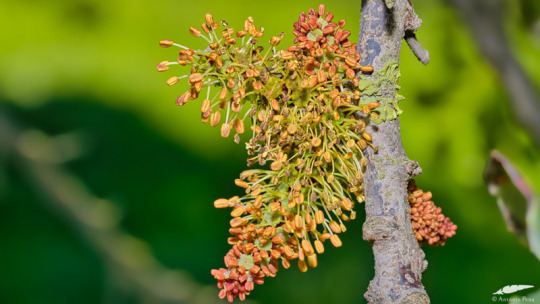
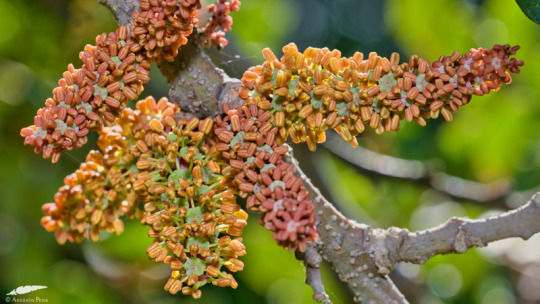
Carob - Alfarrobeira (Ceratonia siliqua)
Cruz Quebrada/Portugal (23/09/2023)
[Nikon D850; ∑150mm F2.8 EX DG OS HSM APO Macro with Flash Nissin Di 700A; 1/250s; 400 ISO]
13 notes
·
View notes
Text
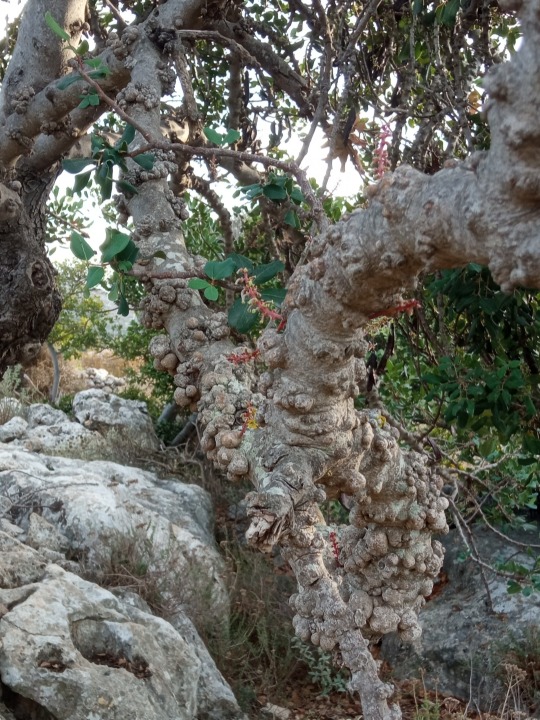
Cancer on Ceratonia siliqua (carob tree) in Northern Rethimno
4 notes
·
View notes
Text
Part 11! There's still more of them!!! More Kamiburanchi bonsai siblings!!!
There's Coral Koolkid the coral bonsai, Mossai Aquascape the aqua bonsai, Cerjud Siliquas the Judas bonsai and Redgum Rivet the Liquidambar bonsai!




7 notes
·
View notes
Text

C – Ceratonia siliqua L. – Carrubo (Fabaceae), pianta con fiori maschili
6 notes
·
View notes
Text
20 Things I've Looked Up
Every time I look up something that I feel that I ought to have known already, I'm putting it here. Publishing when I hit 20 moments of stupidity.
When two parties own something together, the apostrophe goes solely on the second party in the possessive form. e.g. Kevin and Susie's dog.
How to properly fold a burrito.
"Oyez! Oyez! Oyez!" is translated from Anglo-Norman as "Hear! Hear! Hear!" which is why the Supreme Court uses it to call attention.
Pure gold is 24 karats (semi-arbitrary number selected based on the value of the roman siliqua). Karat is calculated by multiplying the purity by 24.
Carats (with a c) are used to describe the weight of gemstones.
"Break the bank" is actually referencing a piggy bank. If something "breaks the bank" it means it was so expensive that you had to smash open your piggy bank to afford it.
Getting into MENSA takes scoring in the top 2% in a standardized intelligence test at one point in your life and little else.
Verisimilitude: The appearance of being true or real. It's the idea of fiction having credibility.
"Posse" originates from the full term "Posse Comitatus," and means "power of the county/guard" in Latin.
Blue Moon Ice Cream is meant to be raspberry, lemon, and vanilla flavored. I think it tastes like playdough.
Dead people on Facebook will probably outnumber living people on Facebook by the turn of the century.
Lots of contrasting opinions about how long an egg lasts in the fridge, but some general consensus on about five weeks.
The Bulletin of Atomic Scientist's "Doomsday Clock" is the closest it has ever been right now at 90 seconds to midnight, though it didn't have a chance to update in the middle of the Cuban Missile Crisis.
The UK word for "anesthesiologist" is "anaesthetist" and it's just as difficult to pronounce as it looks.
An abacus can be used for counting, addition, subtraction, multiplication, and division. Specialized ones can be used to find square and cube roots. This video was the first way to learn that I found that didn't make my eyes glaze over.
Ginger Beer versus Ginger Ale Ginger beer tastes spicier, but so does Verners. They're both non-alcoholic.
Alan Iverson's critique of "practice" was referenced by Ted Lasso for one of its most famous moments.
There's no definite way to distinguish essential tremor from Parkinson's disease and they often get mistaken for each other.
Recidivism (the likelihood of criminals to commit crime again) is a top theory behind how the criminal justice system operates, but good stats have never been kept on it.
Bullseye is not the top target in Darts, points-wise.
2 notes
·
View notes
Text
D-Galacto-D-mannan from Ceratonia siliqua
D-Galacto-D-mannan from Ceratonia siliqua Catalog number: B2018932 Lot number: Batch Dependent Expiration Date: Batch dependent Amount: 10 mg Molecular Weight or Concentration: N/A Supplied as: Powder Applications: a molecular tool for various biochemical applications Storage: N/A Keywords: N/A Grade: Biotechnology grade. All products are highly pure. All solutions are made with Type I ultrapure…
0 notes
Text

Very Rare Emperor Constantine Silver Ingots Saved From Illegal Sale
A man allegedly tried to illegally sell three rare Roman-era silver ingots that his great-grandmother reportedly found in her garden years ago.
Three "truly sensational" Roman-era silver ingots depicting Constantine the Great were nearly sold illegally on the internet, a new investigation finds.
An unnamed man alleged that his great-grandmother found the rare artifacts buried in the family's backyard in Transcarpathia (also known as Zakarpattia), a region in western Ukraine. Later, the man reportedly tried to sell one of the silver bars online, according to Public Uzhgorod, Ukraine's public broadcast station.
However, officials from the museum intervened by reporting the attempted illegal sale to local law enforcement. When officers searched the home, they discovered two additional ingots. Because the ingots have "special cultural value," Ukraine's Office of the Prosecutor General has taken over the case, according to a translated statement from the National Museum of the History of Ukraine in Kyiv.
Each of the metal blocks, which are almost entirely pure silver, weighs more than 12 ounces (342 grams) and contains a coin-shaped impression of Emperor Constantine the Great on each side, according to the statement. Constantine, who ruled from A.D. 306 to 337, is known for ushering Christianity into the Roman Empire and moving his capital to "New Rome," which later became Constantinople (modern-day Istanbul).
The ingots would have been used during the minting process to strike coins known as siliquae. The coins with Constantine's likeness would have been issued between A.D. 310 and 313 in Augusta Treverorum, a Roman city that today is Trier, Germany. At one time, the pieces would have been batched together with a thin, silver ribbon, which has since been lost, according to the statement.
"Three ingots fastened together were supposed to be a gift for a very high-ranking person," Maksym Levada, a curator at the museum, said in the statement. "The fact that they were found outside the Roman Empire on the territory of modern Ukraine makes them an invaluable source of our past."


Experts estimate the treasure's value at 3.5 million Ukrainian hryvnia, or about $84,800.
"But what makes them unique is not the cost, but the fact that only a few similar ingots have been found in Europe to date," Andriy Kostin, Ukraine's prosecutor general, said in the statement.
There are about 90 known Roman silver ingots in existence today, with only 11 containing mint stamp impressions, making the three ingots' recovery even rarer, according to the statement.
Kyrylo Myzgin, an archaeologist and faculty member at the University of Warsaw who initially examined the ingots, said in an email that the finding "can be considered truly sensational."
"It is excellent news that they ended up in a museum rather than on the black market for antiquities," Myzgin said. "Roman silver ingots with coin die imprints are incredibl\y rare and were virtually unknown outside the Roman Empire. It is likely that these ingots reached the territory of what is now western Ukraine as a result of interactions between the local population — possibly Germanic tribes or Dacians [people in what is now largely modern-day Romania] — and the Roman Empire in the early 4th century. However, the exact nature of these interactions has yet to be determined."
The ingots are now on display in the museum's "Salvated Treasures" exhibition, which contains a collection of rescued artifacts.
By Jennifer Nalewicki.

#Very Rare Emperor Constantine Silver Ingots Saved From Illegal Sale#ukraine#transcarpathia#zakarpattia#Emperor Constantine the Great#silver#roman-era silver ingots#ancient artifacts#stolen#looted#archeology#archeolgst#history#history news#ancient history#ancient culture#ancient civilizations#roman history#roman empire#roman emperor#roman art#ancient art#art history
37 notes
·
View notes